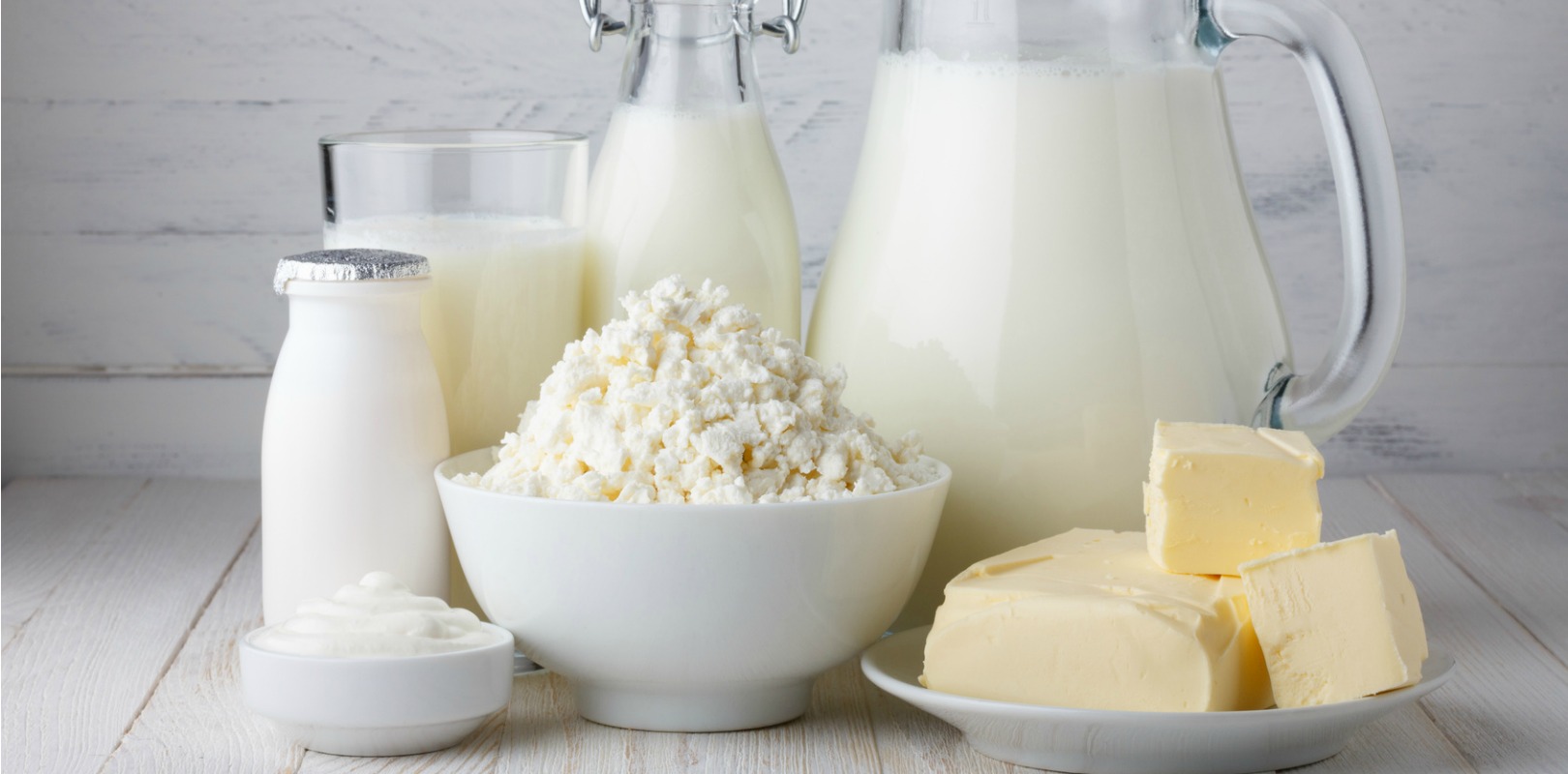Packed full of nutrients, it can confer a host of health benefits, prompting world experts to call on us to eat much more yogurt and other dairy foods than we do currently.
Latest evidence that yogurt can help us manage our weight was one of the hot topics discussed at the First Global Summit on the Health Effects of Yogurt, held recently in Boston, USA(1). Here are the full panel discussions from the event.
A snack to help you stay slim
The potential role of yogurt in weight management has led experts believe that it is set to become a valuable weapon in the fight against the obesity epidemic that is sweeping across the developed world. ‘Teenagers are getting overweight everywhere in the world,’ said Professor André Marette from the Department of Medicine at the Heart and Lung Institute, and Scientific director of the Institute of Nutrition and Functional Foods at Laval University, Quebec, Canada. ‘We have to think about using yogurt as a new snack – a snack that can replace very high-dense energy snacks, which are causing or are contributing to obesity.
‘Yogurt is a very good food in terms of bringing a lot of nutrients and a high level of proteins, and is clearly satiating. It should be considered a very good snack and this would be one way to try to stop the devastating epidemic of obesity,’ said Professor Marette, speaking after the Summit.
His views are backed by studies showing that dairy foods– and low-fat yogurt in particular – seem to help burn fat while minimising the loss of lean muscle mass – a phenomenon known to help maintain weight loss. In other words, yogurt may help the shedding of flab from around the waistline in addition to weight loss.
Results of the huge landmark Framingham Offspring study were described by Dr Paul Jacques, Director of the Nutritional Epidemiology Program and Senior Scientist at the Jean Mayer USDA Human Nutrition Research Center on Aging at Tufts University in Boston, USA. Involving more than 3,000 people observed over 17 years, the study showed that those who ate three servings a week of yogurt had a 50% reduction in weight gain and a 15% reduction in waistline circumference expansion compared with those who had no yogurt in their diet.
Summary of the session Yogurt and Weight Management by Dr Paul Jacques
Densely packed with nutrients
A big reason for putting yogurt at the top of your shopping list, said Dr Victor Fulgoni, Senior Vice President of Nutrition Impact, a consulting firm based in Michigan (USA), is that it’s one of the most nutrient-dense foods you can get. It’s a rich source of protein and essential nutrients such as calcium, potassium, magnesium and, in some countries, vitamin D – and also contains healthy bacteria.
Yet people around the world fail to eat enough nutrient-dense foods such as yogurt and other dairy products. As a result, adults and children commonly lack the nutrients they need to protect them against long term health problems. In the USA, for example, 4 out of 10 of the population aged over 2 years fail to get enough calcium from their diet.
Bone disease, diabetes and stroke are all more likely to develop among people who haven’t eaten sufficient dairy foods than those who have, said Connie Weaver, Professor and Head of the Department of Nutrition Science at Purdue University, West Lafayette, Indiana, USA. Doctors’ concerns over these dietary shortfalls have led many countries around the world to introduce national guidelines – most recommending either two or three servings of low-fat or fat-free dairy food a day. ‘It’s a fact that if you consume around three servings a day of dairy, you are much more likely to meet the nutritional guidelines for calcium and potassium. Dairy is simply the best and most economical source of these nutrients,’ said Dr Weaver.
Summary of the session The Science Behind Current Dairy Dietary Guidelines by Dr Weaver
Summary of the session Principles & Evaluation Tools for Assessing Nutrient Density : Application to Yogurt by Dr Fulgoni
Strengthening bones
Teenagers in particular need bone nutrients but adolescent girls are among the worst offenders for falling short on their dairy foods in these critical years of growth – and this is reflected in the fact that 80% of hip fractures later in life are among women. Older people are another group who need to focus on their dairy consumption for bone health, but again, their diets are often lacking in the right nutrients, said René Rizzoli, Professor of Medicine at the University Hospitals of Geneva, Switzerland.
You don’t have to drink a litre of milk every day to reach your target dairy consumption. Instead, you can vary it with, say, one glass of milk, a yogurt, and a piece of cheese. ‘Then it’s easy to reach 3 servings a day of dairy products – this will provide all the calcium you need and 40-50% of the need for proteins,’ explained Professor Rizzoli. Recent years have also seen a better understanding for the role of vitamin D in bone and general health. For this reason, vitamin D is added to dairy products in some countries.
Protecting against heart disease
Including low-fat dairy products in your daily diet may reduce your risk of developing some of the most common life-threatening diseases, including heart and vascular disease and type 2 diabetes. This finding refutes traditional opinion in which people, particularly those who have had a heart attack in the past or anyone with existing heart disease, have been warned off yogurt, cheese and milk because the saturated fat in them has been considered bad for the cardiovascular system. Not so, say the experts. ‘In fact, fermented dairy products, such as yogurt and cheese, seem to have a protective effect on the heart,’ said Dr Arne Astrup of the Department of Nutrition, Exercise and Sports at the University of Copenhagen, Denmark. Recent studies have shown that dairy products are actually mildly beneficial to the heart, with a 6% reduction in cardiovascular disease risk, he said.
Summary of the session Yogurt Consumption to Prevent Metabolic Diseases: Epidemiological and Experimental Studies by Dr Astrup
Value for money
Separate research has shown that dairy products can reduce the chances of high blood pressure by 40%, diabetes by 30%, bladder cancer by 40% and colon cancer by 35%. And with a good quality diet that includes dairy, deaths from all causes fall by a quarter – a good reason to ditch the fizzy drinks and junk food, said Dr McCarron, who is Adjunct Professor with the Department of Nutrition, University of California, Davis, USA. What’s more, dairy products are relatively cheap, so their role in disease prevention could lead to huge savings in healthcare costs ‘almost so big that you say it’s in a fairy-tale category,’ said Dr McCarron. ‘Yogurt specifically can be tied to major health benefits and by increasing its consumption we have an opportunity to dramatically improve healthcare at remarkably low cost,’ he added.
Summary of the session Dairy and Yogurt Consumption: Health Benefits and Cost Effectiveness by Dr McCarron
Boosting the immune system
Among the dairy products, it appears that fermented products such as dairy and cheese hold particular health benefits. This could be related to the bacteria they contain. These ‘good’ bacteria may limit the number of harmful bacteria in our gut, and/or they could influence our immune system, suggested Professor Lorenzo Morelli from the Microbiology Institute at the University Cattolica del Sacro Cuore, in Piacenza, Italy.
‘In our intestine there are a lot of cells that are related to immune function and so if you have good bacteria – the probiotic bacteria – in your gut, they could modulate your immune system in order to attain two final goals – one is to have a very active immune system against infection and the second is to reduce the risk of allergy.’ In particular, several studies have shown a benefit of ‘good’ bacteria against the allergic skin condition, atopic dermatitis, said Professor Morelli.
The solution in lactose intolerance
When it comes to the nutrient contents of foods, there’s no real substitute for dairy products, the experts agreed. Professor Dennis Savaiano explained, ‘It’s often argued that you can get calcium from green leafy vegetables but in fact you’d need so many servings of green leafy vegetables that it’s really not feasible.’ But for many people, lactose intolerance leads them to avoid dairy products. Yogurt could be their solution said Professor Morelli. It provides a more easily digestible alternative to milk, said Professor Savaiano, Professor of Nutrition Science at Purdue University, USA.
‘Yogurt bacteria contain high levels of the lactase enzyme and this enzyme acts in the intestine to help digest the lactose. So eating yogurt is like taking a digestive enzyme supplement,’ he said. ‘There are well controlled double-blind clinical trials that show lactose-intolerant individuals can consume as much yogurt as they want and not have symptoms of intolerance.’
Summary of the session Yogurt and Gut Health by Prof Savaiano and Morelli
Dr Andrew Prentice, from the London School of Hygiene and Tropical Medicine, UK summed up the benefits of yogurt and other dairy products, particularly the widely available low fat options. ‘Their nutrient density is such that that they make a great addition to the diet. Where there are problems with the nutrient density of the diet decreasing because we’re eating too many junk foods, then dairy products clearly have a very strong role.’
1. The First Global Summit on the Health Effects of Yogurt was held at the 2013 Experimental Biology meeting in Boston, USA, on 24 April 2013. Over 300 delegates – including nutritionists, gastroenterologists, paediatricians and microbiologists – from 15 countries gathered to hear 25 top level experts present latest scientific advances in the field and identify further necessary areas of research.












